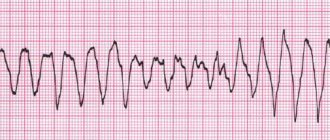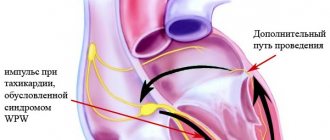Last updated date: 10/20/2020
Author, editor and medical expert - Klimovich Elina Valerievna.
American doctors first reported the possibility of toxic shock syndrome (TSS) from tampons in 1978. Since 1980, pathology has been identified as a separate disease in the United States. And three years later, this problem became so acute that it was brought up for discussion at an international conference1. Although only 14 out of 100 thousand women develop this serious condition1, we decided to tell you more about it so that you can avoid this serious problem.
Why do tampons cause toxic shock?
The cause of toxic shock syndrome is Staphylococcus aureus (Staphylococcus Aureus), which lives in the vagina of 10% of healthy women. But TSS is caused only by staphylococci that are capable of producing a toxin.
To neutralize staphylococcal poison, the immune system synthesizes antibodies. If the immune system fails, bacterial poisons enter the bloodstream and cause intoxication1.
98% of women who test positive for vaginal staphylococcus have antibodies against its toxins. Others produce few or no antibodies, putting them at risk of developing TSS.
In the absence of immune protection, TSS may be caused by more than just hygiene products. The impetus for the development of shock is sometimes abortion, childbirth and gynecological operations. In all these cases, a wound or “pocket” of dead cells appears, in which staphylococci can settle and multiply.
Symptoms of TSS
Early signs of TSS may appear within 48 hours of insertion or removal of tampons1. Most often, toxic shock develops if a woman uses a highly absorbent tampon and does not replace it with a new one on time.2
The disease develops acutely. Typical signs of the syndrome include:
- fever up to 39 0C;
- drop in blood pressure;
- rashes on the body1.
The rash is located in various parts of the body: on the face, torso and limbs. At first it resembles a mild sunburn. After 3-7 days, the skin begins to peel off2, and on the palms and soles it begins to peel off in patches, like peels1. Also, in the acute period, TSS may cause concern:
- increased skin soreness;
- “aches” and pain in muscles and joints;
- weakness;
- drowsiness;
- lethargy;
- confusion;
- nausea and vomiting1.
Sometimes there is redness of the skin around the vaginal opening and purulent discharge from the genital tract. But more often there are no symptoms of a genital tract infection, because staphylococci do not cause local inflammation1.
Types of TSS, what are the dangers of modern tampons and pads
The symptoms of toxic shock and its severity largely depend on its type. In total, there are 2 forms of the disease: staphylococcal and streptococcal. The differences lie in the characteristics of the activity of these bacteria in the human body and their effect on it.
The staphylococcal form of the disease is considered the mildest. As the name suggests, this type of TSS is caused by the activity of Staphylococcus aureus. This seemingly harmless bacterium often settles on the human body and especially loves places such as the nose, skin, and mouth.
Living on the surface, it is not dangerous. Staphylococcus poses a threat to health only if it gets into the blood. In this case, it becomes activated and releases the TSST-1 toxin into the body. Streptococci act in much the same way.
Toxic shock syndrome is a condition that is easily triggered by personal hygiene products used during menstruation. Although the risk is much higher for women who use tampons and menstrual cups, pads are also a factor in TSS.
They provide a favorable environment for the development of bacteria, which begin their active activity when the secretions come into contact with oxygen.
The differences between streptococcal and staphylococcal syndromes are shown in the table:
| View | Bacteria that cause disease | Risk factors | Symptoms | Prevalence and mortality |
| Staphylococcal | Staphylococcus aureus | Using tampons; infections due to childbirth, abortion or surgery. | Fever, vomiting, inflammation of the mucous membrane, decreased blood pressure, rash, liver damage. | Occurs in 3 out of 100,000 women during menstruation and in 15% of cases after childbirth, abortion and surgery; the mortality rate is less than 3%. |
| Streptococcal | Streptococcus pyogenes | Trauma, surgery, use of NSAIDs, viral infections. | Fever, respiratory distress, severe pain in the affected area, bleeding disorder, liver damage. | Occurs mainly in healthy children and adults; the mortality rate can reach 60%. |
When to see a doctor
Of course, all of the listed symptoms of TSS rarely occur at the same time. It also happens that the first signs of shock appear only 20 days after menstruation1. Therefore, always monitor your health and be sure to call a doctor at home if you develop fever, body aches, weakness, dizziness or skin rash. Even if the cause of the illness turns out to be a common ARVI, it is better to play it safe. Be sure to tell your doctor that you use tampons during your period. This will help diagnose TSS. With timely seeking medical help and proper treatment, complications can be avoided1.
Treatment
In order for the treatment process to be as effective as possible and not to drag on for many weeks, it is necessary to contact a medical institution for help at the moment when the first symptoms appear and suspicion of TSS arises. In this case, doctors can guarantee a quick recovery and easy resolution of the problem.
When a patient shows signs of toxic shock, he is urgently hospitalized to provide care and prevent the spread of infection. The patient is sent to the intensive care unit. First of all, the cause of the disease is eliminated - an object placed in the vagina (tampon or menstrual cup, diaphragm, etc.).
The main stages of treatment include combating the spread of infection and measures aimed at maintaining organ function and stabilizing the patient’s condition. With timely detection of the disease and early initiation of therapy, you will only have to spend a few days in the hospital. In advanced cases, treatment lasts up to several weeks.
Treatment of infection
Immediately after hospitalization and elimination of the foreign body from the vagina, the mandatory process of decontamination begins, that is, disinfecting the body and destroying harmful microbes. It occurs by washing the organs affected by the infection.
Toxic shock syndrome, like many other infectious diseases, occurs with large loss of fluid. In medicine, this is solved by installing droppers that help restore the water-alkaline balance.
Antibiotics fight the infection itself. Depending on the severity of the condition, as well as the type of microorganisms that caused TSS, the patient is prescribed the following drugs and their combinations:
- clindamycin and beta-lactam;
- vancomycin;
- clindamycin and oxacillin;
- daptomycin and clindamycin;
- nafcillin;
- linezolid.
These medications help eliminate pathogenic foci and also reduce the likelihood of relapses. Properly selected antibiotics reduce the risk of death.
Maintenance therapy
In addition to eliminating the infection, it is also important to provide the patient with conditions in which the body can function as usual. Oxygen tanks are used to prevent dizziness, fainting and suffocation caused by toxins.
A person breathes its components through a special mask for a certain amount of time, which helps normalize breathing.
To maintain the required level of fluid in the body, the patient is prescribed IVs. The procedure helps eliminate disturbances in the water-alkaline balance and prevent dehydration. The patient's body also needs fluid to normalize the functioning of internal organs and protect them from damage caused by toxins. Droppers may be prescribed as a treatment for low blood pressure.
Dialysis
In humans, the kidneys cleanse the body of harmful substances. They are the ones who filter out the accumulated residues of heavy metals, poisons and other compounds in the body that interfere with normal life and threaten health, and then remove them along with urine.
Hemodialysis
However, with the development of TSS, actively reproducing bacteria release so many toxins that the kidneys can no longer cope with cleansing the body on their own. In addition, the disease can affect various systems, affecting them with infection and depriving them of functions important for life. The urinary organs are also at risk.
If, as a result of toxic shock, the kidneys can no longer cope with the load, the patient is connected to a dialysis machine. This allows you to artificially remove compounds accumulated in the body, significantly reducing the percentage of their content.
Cleaning infected tissue
The infection is spreading rapidly. Often, having affected the site of origin, it spreads to other tissues, resulting in damage to the skin or entire limbs. There are cases where toxic shock led to the amputation of legs, arms and fingers.
However, the spread of infection does not always end with the removal of the affected part of the body. In some cases, when the damage has not yet reached a severe form, it is sufficient to carry out a procedure for removing non-viable tissue. To do this, they are dried and then cleaned, neutralizing and preventing the spread of microbes.
How to reduce your risk of developing TSS
In 97% of cases, TSS is treatable, but the disease can develop again1. Therefore, if you have had toxic shock, don't use tampons - choose sanitary pads.
To reduce your risk of developing TSS from tampons, follow these guidelines:
- do not use a tampon with damaged individual packaging;
- open the wrapper only with clean hands;
- do not place the tampon on a surface that may be contaminated with bacteria - hold it in your hand;
- tampons are intended only for menstrual flow; for normal flow, replace them with panty liners;
- change the hygiene product every 4 hours, do not leave it in the vagina at night, and also if you do not have the opportunity to quickly replace it;
- choose only high-quality hygiene products, such as ob®;
- Always consider the amount of menstrual blood and do not use highly absorbent tampons if there is little discharge.
Everything we've told you about TSS isn't a reason to stop using tampons. ob® tampons are a modern, safe hygiene product that makes life easier for millions of women. Among ob® tampons you can find convenient options with different absorbent capacities. Use them and follow safety rules.
Diagnostics
The main way to define the syndrome is still clinical assessment. The diagnosis largely depends on the symptoms described by the patient, so when you see a doctor, it is important to describe your condition in as much detail as possible.
Typically, when suspecting TSS, doctors look for the following signs:
- a characteristic rash resembling a burn;
- flaky skin;
- dizziness and cases of fainting;
- feeling of nausea and vomiting;
- state of fever;
- low blood pressure.
Tests will be required to confirm the diagnosis. They are necessary in order to assess the general condition of the body and identify which organs were affected as a result of toxic shock. Typically, a person with TSS has multiple body systems affected. The liver is especially affected.
The most effective way to determine a person's health status is through culture. However, in most cases, traditional urine and blood tests are sufficient.
Tampon toxic shock syndrome: symptoms and treatment
Toxic shock syndrome from tampons is the topic of the article. You will learn the cause and symptoms of the disease. And also what threat feminine hygiene products pose. What can replace pads and tampons?
Tampon toxic shock syndrome
Toxic shock syndrome from tampons is a serious disease that manufacturers do not write about on the packaging of feminine hygiene products. Although this pathology is rare, it is progressing more and more every day.
The disease at the first stage resembles the flu, so people begin to treat themselves for a cold, without taking into account the seriousness of the situation.
Pay attention to signs such as muscle spasms, severe headaches and stomach discomfort, fever, vomiting, diarrhea, and rash on the palms.
It is better to immediately seek help from a specialist who will prescribe appropriate tests and then treatment.
Causes
So, we have looked at the symptoms of toxic shock syndrome. Now let's discuss the causes of the disease. There are several of them.
Using tampons on a regular basis. Vaginal contraceptives. Childbirth. Disturbances in the functioning of the reproductive system. Candidiasis, bacterial vaginosis. Failure to comply with hygiene rules and improper use of Tampax. Weak immunity.
The disease develops very quickly, affecting almost all organs of the body. These include the liver, kidneys, skin and even blood vessels. The worst thing is that toxic shock syndrome can lead to death. A stable healthy immune system and good hygiene will help get rid of the infection as soon as possible.
As you can see, the reasons are visible and can be easily eliminated.
Complications of toxic shock syndrome
Like any other disease, toxic shock syndrome causes complications. Doctors include:
- relapse of toxic shock syndrome;
- heart, kidney and liver failure;
- blood poisoning;
- deterioration of vision, attention, hearing.
Treatment of an infectious disease
Treatment for toxic shock syndrome can be long and drawn out. After first aid is provided to the victim, therapy of the highest intensity is prescribed.
Includes observation, restoration of vascular function, maintaining blood pressure in a normal state, the use of glucocorticoids, antibiotics, and the use of antistaphylococcal immunoglobulin. With timely treatment, you can get rid of the manifestations of the disease within 2-3 days.
The dangers of using tampons
So, one of the reasons for the development of the disease is the uncontrolled use of tampons. Let's look at their composition. Innovative models have components that, if used frequently, negatively affect a woman’s body.
Dioxin. The substance is used as a bleach. This component can cause cancer, disrupts the functioning of the immune and reproductive systems, causing endometriosis.
Viscose. It absorbs blood in the best way, but when the tampon is removed, the fibers of the component may remain on the mucous membrane.
Cotton. The fibers that remain on the vaginal walls when the tampon is pulled out are associated with the appearance of ulcers and minor injuries.
But these are not all the negative aspects of using tampons. Their negative impact lies in the incorrect outflow of blood, which sometimes ensures the return of fluid.
Deformation of the inner part of the vagina (in an aerobic environment, staphylococcal syndrome rapidly develops and bacteria multiply; toxins of Staphylococcus aureus appear). A decrease in the number of lactic acid bacteria leads to activation of the pathogenic flora of the vagina.
Experts advise changing the tampon every 3-4 hours, otherwise bacteria formed in the blood will immediately spread to the genitals.
Failure to promptly replace a tampon can lead to toxic shock syndrome.
Feminine pads
On menstruation days, more than ever, you want more cleanliness, comfort and coziness. It is believed that sanitary pads are one of the effective ways to protect yourself during the menstrual cycle.
But these protective measures are dangerous to health. 63% of diseases in women develop due to their improper use.
Types of gaskets
Today on the hygiene products market you can find a fairly wide selection of pads. They are disposable and reusable. Among them, there are pads for regular use (they absorb blood of medium intensity).
- For daily use (they will become indispensable for small and weak mucous secretions, and also eliminate unpleasant odors).
- Ultra-thin (the structure of the models is quite thin, but they absorb very small amounts of moisture).
- Maxi (they have a fairly decent size and absorb a large amount of secretions; such models are used for long trips or during night sleep).
- Special pads for sleeping (ensure a restful night's rest, complete protection from unexpected stains).
How to choose gaskets
Despite the wide range of products on the consumer market, all products have the same structure.
The topmost layer of the gasket consists of an artificial or cotton mesh (it has a big advantage because it is always dry and does not subject the product to deformation).
The inner layer consists of a special filler (it thoroughly absorbs moisture and quite often causes skin irritation).
The bottom layer is made of polyethylene or a breathable material that does not allow liquid to pass through.
Each package with pads has a designation in the form of droplets, which indicates the absorption coefficient of the product (the more of them, the higher the level of absorption; “wings” perfectly protect underwear from stains and unpleasant contamination).
Most manufacturers produce scented hygiene products to eliminate unpleasant odors, but they can cause allergies (when purchasing, do not forget about this danger).
Situations of thrush appearing after the use of scented pads are known.
I advise you to buy hygienic protective products that are odorless and colorless - think about your safety.
Negative effects of gaskets
It may seem that the pads are harmless. But this is a mistaken opinion. What disadvantages do they have?
During active walking, the pads become wrinkled or move to the side. You feel discomfort while using this hygiene product. Allergic reactions appear, unpleasant itching and irritation are felt. Cystitis or thrush occurs, and an unpleasant odor occurs.
Pads prevent you from leading an active lifestyle. A greenhouse effect is created, allowing infections to penetrate deep into the cervix or remain on the mucous membrane. Otherwise, the effect of using pads is quite acceptable during menstrual periods.
Preventing toxic shock syndrome from tampons
So, tampon toxic shock syndrome is a disease caused by a bacterial infection. It is necessary to use preventive measures, and the disease will certainly bypass. During your period, alternate the use of tampons with pads and take breaks.
Buy products with absorbent capacity that will accommodate the amount of blood discharge. Change the product every 3-4 hours.
So, today you learned about a disease called toxic shock syndrome from tampons. Surely, you should have been surprised by the dangerous components that make up seemingly absolutely harmless tampons.
What complications and consequences can there be?
Having TSS can seriously impact the rest of your life and lead to new chronic conditions. This is due to the fact that the infection, as it spreads, paralyzes various organ systems, as a result of which they cease to function properly.
Complications of toxic shock include:
- renal failure;
- liver failure;
- decreased blood flow;
- heart failure.
Delayed treatment to the hospital often leads to death. The mortality rate for TSS is 5-15% for the staphylococcal form and 60% for the streptococcal form.
TSS (toxic shock syndrome) is most common among young girls and occurs primarily when using tampons during menstruation. This disease poses a serious threat to human life and health, but immediate consultation with a doctor allows you to overcome the infection in a short time.











